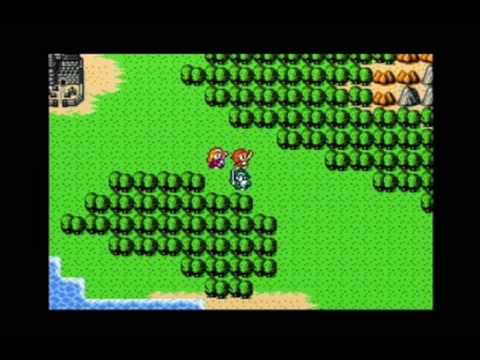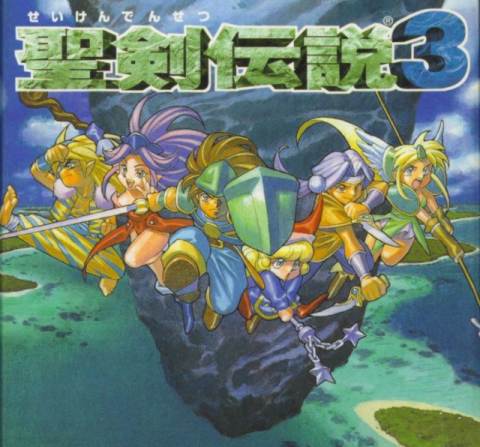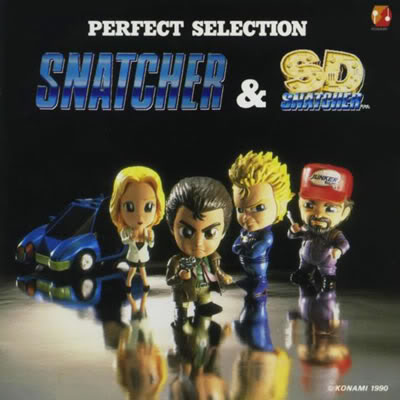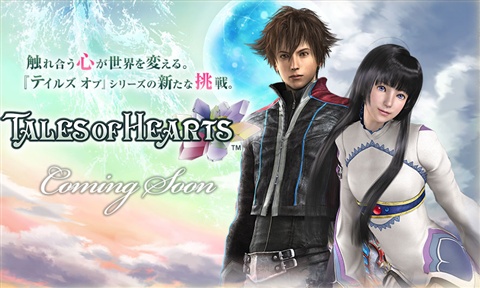GamePro盘点解析未曾在美国发布的14款日本RPG游戏
(游戏邦注:这篇文章论述背景是美国市场和玩家。)
2月中旬DS游戏《勇者斗恶龙6》顺利发布,紧随其后的便是下旬老牌专属游戏伊苏系列的强势回归,让日本RPG游戏粉丝倍感欣喜。然而出于技术限制或是经济方面的顾虑,仍有许多高质量的日本RPG游戏无法在美国发布。以下这些游戏无疑会给美国本土玩家提供绝佳的体验,但很遗憾他们可能没有机会享受到。
1、七龙战记(2009年3月5日于日本发布,平台:任天堂DS)
在这份榜单的游戏中,硬核RPG玩家抱怨最多的就是《七龙战记》,因为这款游戏的确很好。《七龙战记》出身尊贵,由《世界树迷宫》和《梦幻之星》开发团队制作。自然,这两个系列游戏的风格均体现在本作中,玩家从众多不同阶级中选取某个势力,在严密的环境中探索。有深度、复杂的游戏内涵,多姿多彩的艺术风格以及高层次的挑战使其成为颇有价值的游戏,因而其目前的发布状况自然会使玩家相当苦恼。
发布可能性:很低。游戏中含有大量的文字且难度较高,即便是最睿智的发布商也未曾考虑要改变现状。
2、圣龙传说(1996年2月9日于日本发布,平台:Super Famicom)
不难看出,《圣龙传说》这款SRPG的游戏形式与大部分该题材游戏类似,玩家在布满格子的战场上移动单位攻击敌人,直到达成任务目标。但是,《圣龙传说》中也有几处创新之举,如传统的回合制战斗模式以及玩家可以将自己培养的龙带到战场上参加战斗。Squaresoft是16位RPG时代的忠实拥护者,因此很奇怪为何发布商不利用公司的盛誉,将这款游戏本土化后大卖一场。
发布可能性:很低。因名字识别和总体需求量不足,Square Enix可能不会优先发布这款游戏。
3、最终幻想12国际版黄道十二职业系统(2007年8月9日于日本发布,平台:PlayStation 2)
《最终幻想12》故事紧凑且令人满意,但License Board成长系统过于单调。国际版比发布的原作更为出类拔萃的原因在于,这个版本中有12个License Board,玩家可以更好地掌控角色的技能。玩家还能在游戏中召集和控制其他角色,游戏模式也有所增加。
发布可能性:很大。事实上本作只是已发布游戏的升级版,而且Square Enix很喜欢将其《最终幻想》系列游戏再次推广。
4、火焰之纹章:封印之剑(2002年3月29日于日本发布,平台:Game Boy Advance)
《火焰之纹章》系列游戏在美国的发布史甚为奇怪,玩家接触到的首款以《火焰之纹章》命名的游戏事实上在日本是该系列第二款GBA游戏,即首款《火焰之纹章》GBA游戏的续作。就情节架构而言,接下来应该是《封印之剑》,但任天堂决定先发布故事和世界与前作毫无关联的《圣魔之光石》,这使得许多玩过首部在美国发行的《火焰之纹章》的玩家对后续情节倍感好奇。公司以这种方式打乱专属游戏的发布总能鼓动玩家的好奇心,Squaresoft也是如此,在美国发布《最终幻想3》后直接跳到《最终幻想6》。游戏邦希望,任天堂能够有所改变。
发布可能性:有可能。长久以来,任天堂都会在日本发布新《火焰之纹章》游戏后不久即在美国发布。游戏主角Roy也出现在《任天堂明星大乱斗》中。因而,游戏本地化的可能性依然存在。
5、Guadia Quest Saga(2009年2月26日发布于日本,平台:游戏中心CX 2和任天堂DS)
游戏中包含其他游戏可能会被认为是抄袭,然而因为《Guadia Quest》初作质量很高,因而也将这款游戏列入榜单中。《Guadia Quest》是人工制作的游戏中心CX 2游戏集续作(游戏邦注:首款在美国发布的游戏集是《有野的挑战书》。),虽然移除了各个子集中诸如节奏缓慢、模糊的游戏目标和失衡的难度等不良游戏设计,此作依然能勾起玩家NES时代RPG游戏的回忆。15小时的RPG游戏极易使那些在80年代由《勇者斗恶龙》和《最终幻想》陪伴成长的RPG玩家产生共鸣。《Guadia Quest Saga》中还收录了Game Boy Color的RPG游戏,因而有着更丰富的内容,如《口袋妖怪》的宠物召唤机制。玩家的回忆便是这款简单游戏主要可玩之处,也正是这一点使它显得更为特别。
发布可能性:首作《有野的挑战书》在美国的销量不好,因此别期望开发商有兴致引进续作。
6、时空勇士(1994年9月2日于日本发布,平台:Super Famicom)
大多数RPG游戏都将剧情设置在某个独立的世界中,而《时空勇士》可以让玩家从7个差异极大的场景中选择7种不同的剧情,这些场景包括史前时代和未来机械社会等。游戏邦觉得,回合制RPG和基于格子的策略类玩法间的结合也令这款游戏大放异彩。有传闻称此作原本已确定要在美国发布,这使得玩家对游戏的缺阵更为遗憾。
发布可能性:这款游戏适用于早期的Super Famicom平台而且并未开发成系列游戏,再加上缺乏足够的名字识别系统,在美国发布的可能性不大。
7、地球冒险3(2006年4月20日于日本发布,平台:Game Boy Advance)
起先这款游戏开发的目标平台是64DD扩充磁盘机,但随后转向Game Boy Advance并稍加装饰。事实上装饰着实让游戏因祸得福,开发者Brownie Brown得以在这款简单却极具内涵的游戏中进行情感和人物刻画。得益于这些强有力的改造和Shigesato Itoi梦幻般的著作,《地球冒险3》成为玩家的必玩游戏。不幸的是,这款有着最佳剧情的游戏仍未在美国上市。
发布可能性:即便众多游戏迷已将其本地化,任天堂不太可能在美国发布官方版本。
8、女神异闻录:罪(1999年6月24日于日本发布,平台:PlayStation)
Atlus在美国发布首款《真女神转生》游戏后,他们突发奇想决定跳过《罪》而直接发布姊妹篇《罚》,这意味着美国玩家只能了解到《女神异闻录2》的半个故事。然而,公司做出此等决策无疑是出于对玩家需求的考虑。游戏中含有部分争议性内容,如同性恋间的低语以及希特勒复活成为玩家的对手等。但如果仅从游戏的价值来考虑,本作应该得到发布权,因为它与《女神异闻录》初作相比有很大的提高,让核聚变系统和地牢式的设计显得更为完美。
发布可能性:日本玩家已经可以体验到该游戏的PSP平台复制品,因而Atlus可能也会计划在美国发布。
9、沙加2 DS(2009年9月17日于日本发布,平台:任天堂DS)
玩家较为熟悉《最终幻想传说》系列游戏,然而许多人并不知道这实际上是与之完全不同的《沙加》系列游戏的一部分。虽然它们的成功无法同《最终幻想》系列核心游戏相比,这两个系列的游戏同样拥有追随者,该系列《最终幻想传说2》在美国受到空前的欢迎。因而《沙加2 DS》未曾发布就显得有些奇怪了,这款精致的新作采用《最终幻想3》和《最终幻想5》的DS引擎,将原本的黑白怪物带入彩色的三维世界中。游戏中的角色发展系统更为成熟并且舍弃了随机战斗模式,某些《沙加》游戏独有的机制使之为《最终幻想传说2》奠定了基础。
发布可能性:几乎没有。即便游戏有着《最终幻想》的影子,但Square已差不多放弃《沙加》系列在西方的营销。
10、SeGaGaGa(2001年3月29日于日本发布,平台:Dreamcast)
Sega在游戏控制器竞争中落败,但其仍然有着足够的幽默感来制作出《SeGaGaGa》。游戏邦了解到,游戏述说的是某青少年受雇于Sega,帮助公司击败其强劲的竞争对手DOGMA。玩家的首个任务便是召集足够人手组成团队,可以通过回合制劝说和商讨薪水来与这些人较量并收服他们。募集足够员工后,本作就成为类似《游戏发展国》的游戏制作竞赛。这款游戏最好的地方在于整个游戏建立在对Sega作品的回顾上,玩家会时常同某些Sega角色(如索尼克、《欢乐桑巴》中的猴子和Alex Kidd)相互配合或发生争斗。将这款游戏引进美国的最大障碍在于其中包含大量日语冷笑话,这将使本地化的难度大大增加,也正是目前仍未发布的原因。
发布可能性:几乎没有。问题不仅存在于过度日语化的冷笑话,这款游戏最初发布时只在Sega的网上商店中销售而且鲜有副本,Sega是否会不畏艰难将其本地化仍存在疑问。
11、圣剑传说3(1995年9月30日于日本发布,平台:Super Famicom)
出自Square之手的《圣剑传说2》一度畅销,因而玩家认为公司会在最短的时间内发布续作。由于游戏存在某些明显的漏洞和将大量文字译成英语甚为复杂,《圣剑传说3》注定无法在美国发布。这是不幸的,因为《圣剑传说3》不仅改良了《圣剑传说2》中已令人感到满意的可玩性,而且还有所创新。这么多年来,《圣剑传说》系列仍广受玩家追捧,无法在美国见到第三部作品是多么不幸的事。
发布可能性:游戏邦认为这款游戏依然存在些许发布的可能。《圣剑传说2》已在Virtual Console和iTunes商店上发售,如果足够成功,Square Enix或许会考虑引进续作。
12、SD Snatcher(1990年4月27日于日本发布,平台:MSX2)
《Snatcher》是《合金装备》制作者小岛秀夫早期的优秀作品,这款灵感来自于电影《银翼杀手》的点击式冒险游戏仍是他最佳作品之一。但大部分人并不知道《Snatcher》的姊妹游戏《SD Snatcher》,后者是建立在前者基础之上的RPG游戏。点击式的手法被玩家更为熟悉的俯视操作所取代,而且变形的画面显得更具卡通化,这也正是为何名称加上“SD”的原因。尽管游戏发布的可能性不大,但诸如可以在战斗中瞄准身体某些具体部位等有趣的游戏机制仍使此作显得尤为独特。
发布可能性:很低。Konami似乎并不计划对《Snatcher》系列做任何安排,除非公司决定以某种特别的方式庆祝小岛秀夫所取得的成功,否则该作降临美国的可能性微乎其微。
13、圣洁传说和心灵传说(分别于2007年12月6日和2008年12月28日于日本发布,平台:任天堂DS)
Namco Bandai似乎对《传说》系列在美国的发布举棋不定。时而玩家可以享受到《深渊传说》和《薄暮传说》,时而公司又决定放弃美国市场只在日本发布该系列游戏。游戏邦认为,或许美国玩家错过了所有在DS平台而非控制器上运行的《传说》系列游戏巨作。尽管多数《传说》游戏极为相似,其中两款尤为不同。《圣洁传说》将控制器上的《传说》游戏转移至较为方便的DS上,而且战斗采用全3D模式。《心灵传说》将该系列前作独有的特色融入横版过关的2D平面战斗中。玩家可以挑选自己中意的游戏,当然如果玩过两个会获得两种截然不同的体验。无论选择哪款游戏,都不会错。
发布可能性:很低。Namco Bandai很少发布老游戏,但如果公司愿意的话,后续作品依然有可能在美国发布。(本文为游戏邦/gamerboom.com编译,转载请注明来源:游戏邦)
The 14 Best Unreleased JRPGs
With the release of Dragon Quest VI for the DS last week and the old school franchise Ys making a return this week, JRPG fans have a lot to be happy about. But there are still a number of quality JRPGs that have never been released here; whether it was due to technical limitations or financial considerations, the following games each offered an experience Stateside gamers would no doubt have enjoyed—too bad we may never get a chance to do so.
7th Dragon
Japanese Release: 3/5/09 (Nintendo DS)
Of all the titles on this list, hardcore RPG fans may be most vocal about 7th Dragon, and there’s good reason for them to be upset. 7th Dragon has a great pedigree, coming from the team that created Etrian Odyssey and the creator of the Phantasy Star series. Unsurprisingly, the game plays like a mix between the two series, as you pick a party from many different classes and explore top-down environments. Its deep, complex gameplay, colorful art style, and high level of challenge made it a worthwhile title, making its current release status legitimately upsetting.
Chance you’ll get to play it someday: Poor. Its difficult and text-heavy nature means that even niche publishers have passed on this game up to this point.
Bahamut Lagoon
Japanese Release: 2/9/96 (Super Famicom)
Conventional at a glance, Bahamut Lagoon was a SRPG that plays very similarly to most of the games in the genre: you move your units along a grid-based battlefield, attacking enemy units until the mission’s objectives are met. However, Lagoon brings a couple of twists, including a traditional turn-based battle approach and dragon units which you raised and brought to bear out in the field. Squaresoft (as the company was known back then) was one of the stalwarts of the 16-bit RPG era, so it’s a mystery as to why this title wasn’t brought over to take advantage of the company’s strong reputation.
Chance you’ll get to play it: Poor. The lack of name recognition and overall demand means it probably isn’t very high on Square Enix’s priority list.
Final Fantasy XII International Zodiac Job System
Japanese Release: 8/9/07 (PlayStation 2)
Final Fantasy XII was dense and satisfying, but the License Board growth system was too one-dimensional. This is why the International version stands head and shoulders above the original release: Instead of everyone having one identical License Board, this re-release featured twelve which allowed you to greater control over your characters’ specilizations. Add in extras like the ability to control guest characters and summons as well as additional play modes and you have the definitive version of the game.
Chance you’ll get to play it someday: Good. It’s essentially just an upgraded version of the game that was already released here, and it’s well-documented how often Square Enix likes to revisit past Final Fantasy games.
Fire Emblem: The Binding Blade
Japanese Release: 3/29/02 (Game Boy Advance)
The Fire Emblem series has a strange history here in the States: The first game we got was titled Fire Emblem, but it was actually the second Game Boy Advance Fire Emblem title in Japan and a prequel to the first GBA entry. In terms of the overarching narrative, Binding Blade came next, but Nintendo decided to release The Sacred Stones, an unrelated story and world, instead, leaving many who played the first US Fire Emblem to wonder what happened in the next chapter. It’s always curious when companies decide to mess with their franchises in this manner-Squaresoft did the same thing with Final Fantasy, choosing to release Final Fantasy VI as FF III here in the US-so hopefully, Nintendo will rectify it somehow.
Chance you’ll get to play it someday: Fair. Nintendo has continued to release every new Fire Emblem game shortly after it’s released in Japan. Roy, the game’s main protagonist, was also in Super Smash Bros. Melee, so hope for a localized remake remains.
Guadia Quest Saga
Japanese Release: 2/26/09 (Game Center CX 2, Nintendo DS)
Including a game within a game might be considered cheating, but the first Guadia Quest was so good that it had to be put on our list. Part of the faux-retro collection Game Center CX 2 (the first one was released here in the US as Retro Games Challenge) Guadia Quest captured the nostalgia of an NES-era RPG while removing every bit of bad game design associated with that particular subset, including grinding, obtuse objectives, and unbalanced difficulty. What you’re left with is a mean, lean 15-hour RPG that resonates with any RPG fan who grew up in the 80s on Dragon Quest and Final Fantasy. Guadia Quest Saga is more of that, but with additional features from Game Boy Color RPGs, such as Pokemon’s creature recruiting mechanic. It’s a simple game whose gameplay relies on nostalgia, but in this case, that’s what makes it special.
Chance you’ll get to play it someday: The first Retro Game Challenge sold poorly here in the States, so don’t expect publishers to take a chance on the sequel.
Live-A-Live
Japanese Release: 9/2/94 (Super Famicom)
Most RPG titles take place in one discrete world, but Live-A-Live let you choose from seven different scenarios in seven wildly different settings including the Wild West, the prehistoric era, and the mechanical future. The mix between turn-based RPG and grid-based tactics gameplay also made the title stand out. Rumor has it the game was originally slated for a US release, making its absence here sting all the more.
Chance you’ll get to play it: The game looks somewhat dated even by Super Famicom standards, it’s not part of a larger series, and it doesn’t have enough name recognition, so the chances are poor at best.
Mother 3
Japanese Release: 4/20/06 (Game Boy Advance)
Once developed for the planned 64DD add-on, it was then shuffled to the Game Boy Advance, where it received a sprite-based makeover. This was actually a blessing in disguise, as developer Brownie Brown was able to pack a lot of emotion and characterization into these simple-yet-detailed sprites. It’s thanks to these powerful touches and Shigesato Itoi’s fantastic writing that Mother 3 is a must-play. Unfortunately, the fact that it features one of the best game narratives thus far is completely lost to our entire region.
Chance you’ll get to play it: It’s unlikely Nintendo will ever officially release a localized version here, despite the immense support shown by fans.
Persona 2: Innocent Sin
Japanese Release: 6/24/99 (PlayStation)
Atlus released the first Shin Megami Tensei game in America, but they curiously decided to skip over Innocent Sin and released its related counterpart, Eternal Punishment instead, meaning US gamers only got half the Persona 2 story. The decision was no doubt spurred by the bloated production demands, controversial content like homosexual undertones, and the presence of a resurrected Hitler as an antagonist, but on merit alone, the game deserved to be released as it was a huge improvement over the first Persona, ironing out the rough edges of the fusion system and dungeon design.
Chance you’ll get to play it: There is a PSP remake ready for Japanese gamers, so it’s possible Atlus will release it here.
SaGa 2 DS
Japanese Release: 9/17/09 (Nintendo DS)
A lot of you may be familiar with the Final Fantasy Legend series, but what you probably don’t know is that it’s actually part of a completely different series of games called the SaGa series. While they never achieved the same level of success as the core FF series, it did have its following, with Final Fantasy Legend II the pinnacle of the series’ popularity here in the States. This is what makes the lack of a SaGa 2 DS release so strange: it’s a refined remake which used the Final Fantasy III and IV DS engines to bring the black-and-white sprites into the colorful third dimension. There’s also a more concrete development system, no random battles, and some extra mechanics from later SaGa games, which makes this the definitive version of FFL II.
Chance you’ll get to play it: Slim. Even though this entry has Final Fantasy DNA, Square has all but given up on the SaGa series in the West.
SeGaGaGa
Japanese Release: 3/29/01 (Dreamcast)
Sega may have lost the console wars, but at least they had enough of a sense of humor about it to create SeGaGaGa, which stars a teenager hired by Sega to help the company overcome their powerful competitor Son–er, I mean DOGMA. Your first order of business is to hire enough people to form your first development system, which you do by battling them in turn-based battles where you trade insults and negotiate their salary. After you get enough employees, the game becomes a game-making sim not unlike Game Dev Story. Best of all, the entire game is built on Sega nostalgia. You will often interact with and battle Sega characters such as Sonic, the monkey from Samba de Amigo, and Alex Kidd. The biggest hurdle to getting a port was the bevy of the Japanese in-jokes that would have made localization a nightmare, dooming it to its current import-only status.
Chance you’ll get to play it: Slim. Not only are the in-jokes very Japanese, but the initial release was sold exclusively through Sega’s online store and moved very few copies, so we doubt Sega will go through the trouble of localizing it.
Seiken Densetsu 3
Japanese Release: 9/30/95 (Super Famicom)
Secret of Mana was a big hit for Square, so one would think they would want to release the sequel as soon as possible. But Seiken Densetsu 3 was fated never to be released here thanks to some significant bugs and the complicated process of getting the dense amounts of text translated. This was unfortunate, as Seiken Densetsu 3 was both a refinement of Secret of Mana’s satisfying gameplay and an innovative take on the franchise formula. The Mana series remains a fan favorite after all these years, which makes the absence of the third installment so unfortunate.
Chance you’ll get to play it: We’re cautiously optimistic with this one. The original Secret of Mana was released to the Virtual Console and the iTunes store, and perhaps if they’re successful enough, Square Enix will port over its sequel to cash in.
SD Snatcher
Japanese Release: 4/27/90 (MSX2)
Snatcher was one of Metal Gear creator Hideo Kojima’s early triumphs, a cinematic, Blade Runner-inspired point-and-click adventure game that still stands as one of his best works. But most aren’t aware of Snatcher’s strange counterpart, SD Snatcher, an RPG re-imagining of the original game. The point-and-click progression is replaced with a familiar top-down view, and instead of comic book-like stills, everything is more cartoonish and superdeformed (hence the SD label). While it sounds like a gimmicky release meant for hardcore fans, interesting mechanics like the ability to aim at specific body parts in battles keeps the game interesting and unique.
Chances you’ll get to play it: Poor. Konami seems to have no plans to do anything with the Snatcher series, so unless they decide to do it as a special way to celebrate Kojima, we doubt it’ll ever come Stateside.
Tales of Innocence/Tale of Hearts
Japanese Release: 12/6/07 and 12/28/08 (Nintendo DS)
Namco Bandai can’t seem to make up its mind about the Tales series. One minute we’re being inundated by releases-Tales of the Abyss and Tales of Vesperia-then the next minute they decide to cut us off cold turkey and make the series Japan-only. It seems we missed the entire period where all of the mothership Tales games were on the DS instead of consoles. But while most Tales games are essentially the same, the two we missed offer very distinct experiences. Tales of Innocence reproduces the console Tales experience on the DS quite handily, complete with fully 3D battles. Tales of Hearts embraces the series’ sprite-based past with battles taking place on a side-scrolling 2D plane. You can essentially pick whichever one sounds more appealing to you or play both and still feel like you’ve had two different experiences. Either way, you can’t go wrong.
Chances you’ll get to play them: Poor. Namco Bandai rarely goes back to release old titles that never made it here. Still, the inevitable remakes could come here if Namco are so inclined. (Source: GamePro)





















































 闽公网安备35020302001549号
闽公网安备35020302001549号